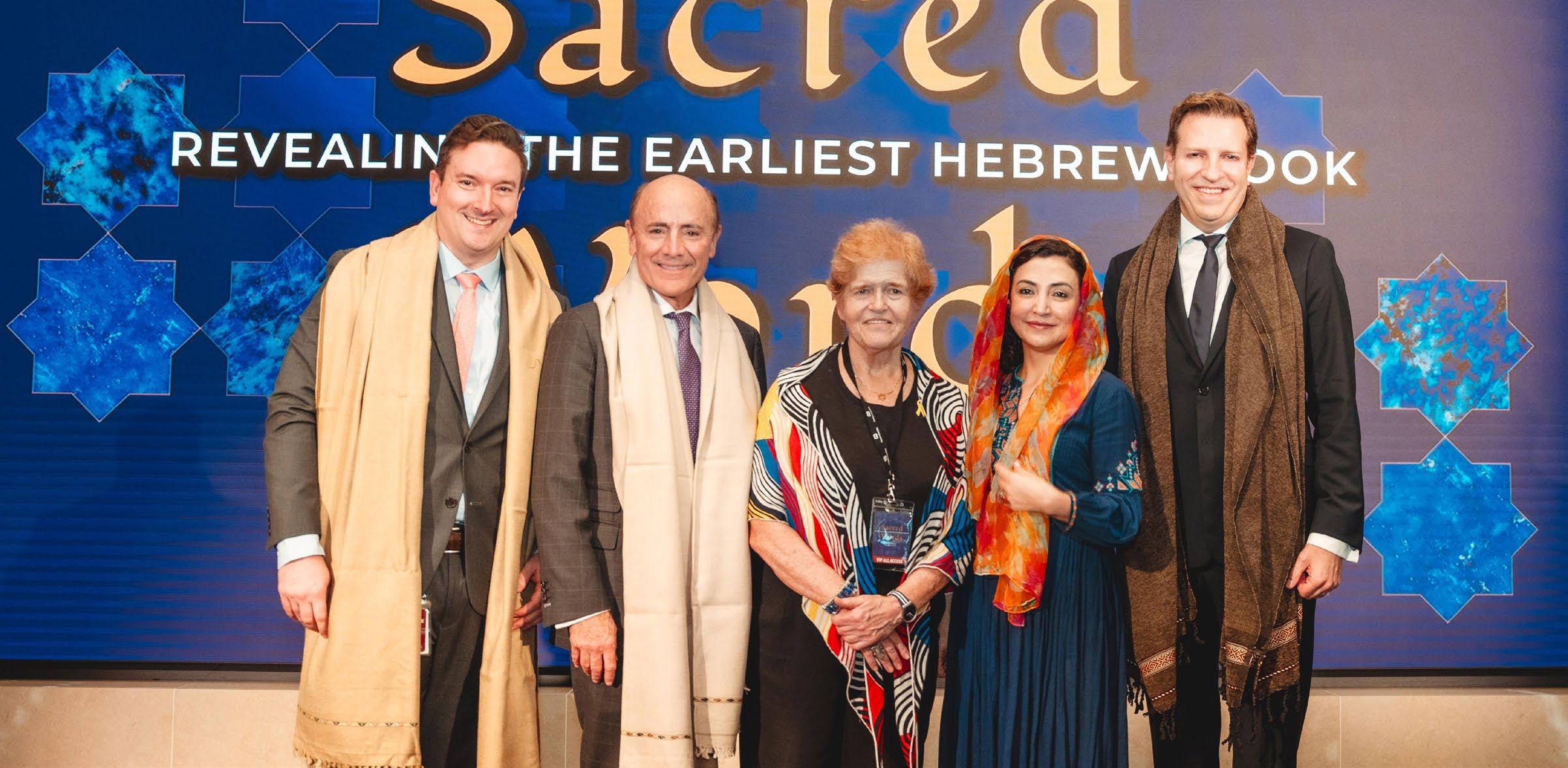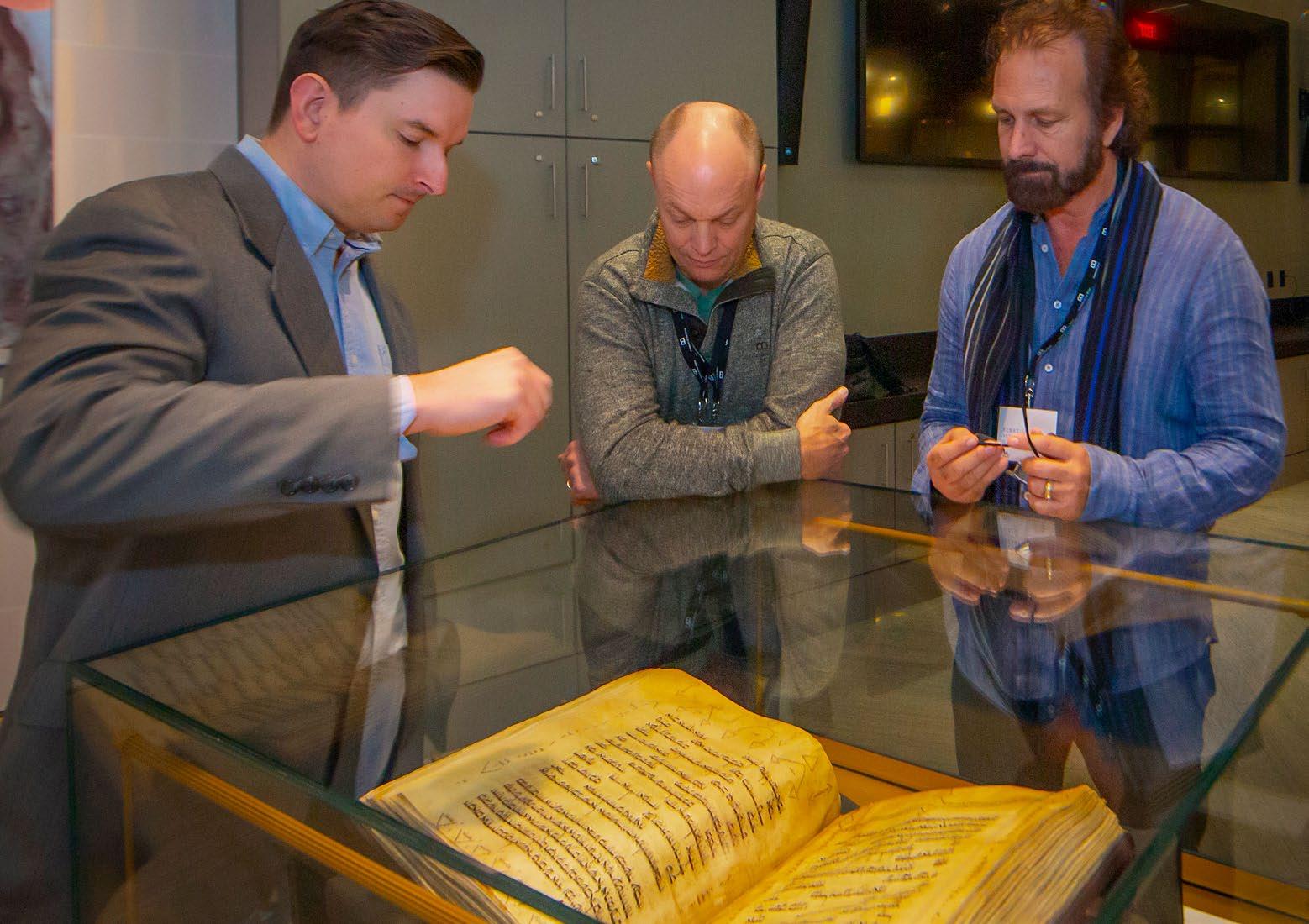
5 minute read
AN UNLIKELY PATH: From SNU to Curator at the Museum of The Bible
By Cyndi Lamb (‘74)
AS A BOY HERSCHEL HEPLER (‘11) loved gymnastics, playing outdoors and baseball. Especially baseball. Living in Texas he was able to play year round. What he did not love was reading. But that changed when he was 12-years-old and Peter Jackson delivered his first installment of the Lord of the Rings trilogy. Knowing how badly her son wanted to see the movie, Hepler’s mom told him she’d buy him a ticket, if he read the book first. He devoured The Fellowship of the Ring, then went on to read books two and three which opened his eyes to a new world - reading.
Growing up in the Nazarene church, Hepler was always interested in the Bible, especially the Old Testament. He was drawn to the breadth and depth of these rich, historical stories. So when he came to SNU on a baseball scholarship, he had no trouble declaring a major. He knew he wanted to study theology. Professors such as Dr. Marty Michaelson and Dr. Brint Montgomery challenged him, and he became part of the ministerial internship program and developed a close relationship with Professor Doug Samples.
“Besides such stellar professors, I was surrounded by brilliant classmates who were serious about their studies. I’ve always been drawn to people smarter than me, and I found that in both the faculty and my peers at SNU.”
While in college, he spent summers working at Pine Cove - a Christian camp based in Texas. Before his senior year he was sent to work at a new location in Lima, Peru. Following that, Pine Cove offered him a full-time position after graduation. Unfortunately, while in South America he became ill. The illness played havoc on his body taking him months to recover. So, for health reasons, he had to decline the camp’s offer. With that door shut, Hepler decided to continue his studies at SNU and pursue his master’s degree.

During Hepler’s program, Prof. Michaelson was invited by the newly formed Museum of the Bible (MOTB) to do a research project and to bring some of his top students with him. Hepler was one of them. After the project was over, the museum offered the grad student a summer internship.
The next year as his master’s work was ending, a church contacted Hepler regarding an opening. Thinking this seemed like the natural next step, he applied. Yet, things stalled when the church quit responding. Before he could feel too discouraged, Museum of the Bible reached out, offering him a permanent position.
Working at a museum was not where I expected to land when I came to SNU six years earlier. I’m a first generation college student and I didn’t know all the things I could do with my degree. The idea that I was going to be around rare, medieval books - some of which were super famous - was really cool.”
In January, 2013 Hepler became a full time employee of Museum of the Bible.

He started as Curatorial Assistant then shortly moved up to Assistant Curator. In 2016, he was promoted to Associate Curator of Hebrew Manuscripts, the role he now fills.
“As a curator I’m attempting to know and understand everything under my care,” explains Hepler. “I research each particular manuscript which includes the text, history of the object, and history of ownership. Before there is ever a display in the museum, there’s a ton of research, writing, design and prep. In my particular area, I curate all Jewish manuscripts - which means any of the museum’s holdings that are handwritten, not printed, but bound like a book before the year 1600.”
The newest exhibit to open at MOTB in September, 2024 is called Sacred Words - Revealing the Earliest Hebrew Book. Visitors to the museum will see the oldest-known Hebrew book which contains Sabbath prayers, liturgical poems, and the oldest known Haggadah - a Jewish text that sets forth the order of the Passover Seder.
This exhibit is the culmination of the research that Hepler and other scholars have been working on for the last eight years and it has involved a bit of historical sleuthing. For example, scholars originally thought the book was discovered in Egypt. But Hepler found photos and video proof of its earlier discovery in Afghanistan. This led to a remarkable collaboration between the museum, Afghan Jews in the US, and officials in Afghanistan.
In addition, when the museum acquired the book that is the center of the newest exhibit - the Afghan Liturgical Quire - they had the manuscript carbon-dated. Most of the earliest Hebrew books date back to the AD 900s. This manuscript dates to the 700’s making it the oldest Hebrew book in the world!
“The best part of my job is the close proximity I have to sacred things. I’m getting to share the space - through these manuscripts - across time with some unbelievable people beginning with Jewish travelers on the Silk Roads in the 700s of Afghanistan who first created it... up to the modern Afghan Jewish community who celebrates the discovery of such a rare Jewish book.”
The irony of a boy not liking to read growing up to become a curator of Hebrew manuscripts is not lost on Hepler. He spends most of his time reading now. It was not a job or a path he could have predicted for himself.
To learn more about the Museum of the Bible, visit museumofthebible.org.










